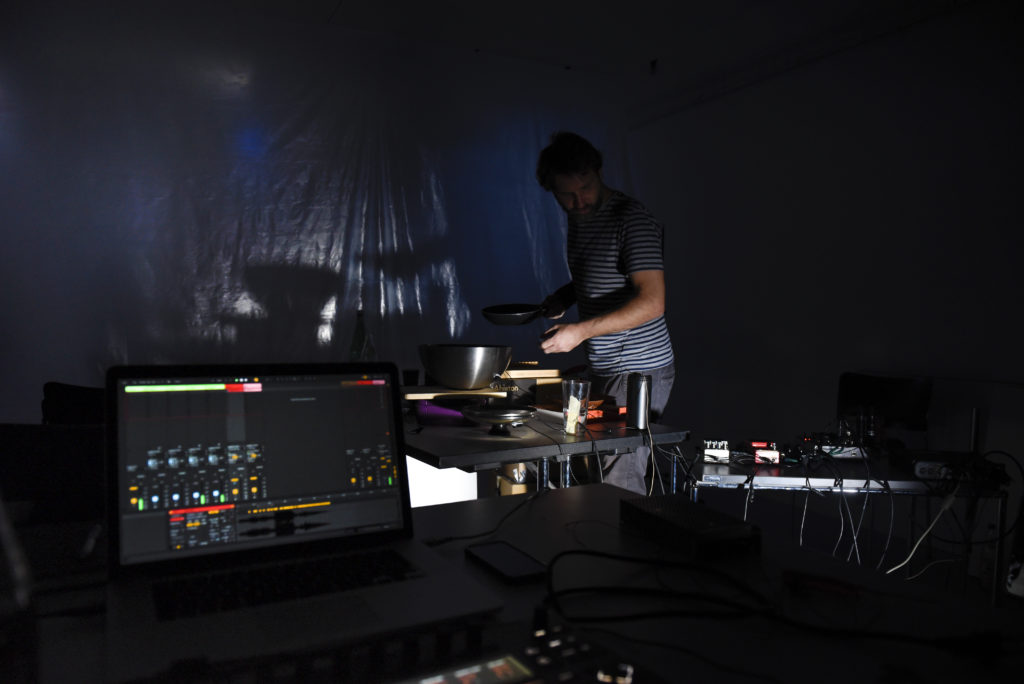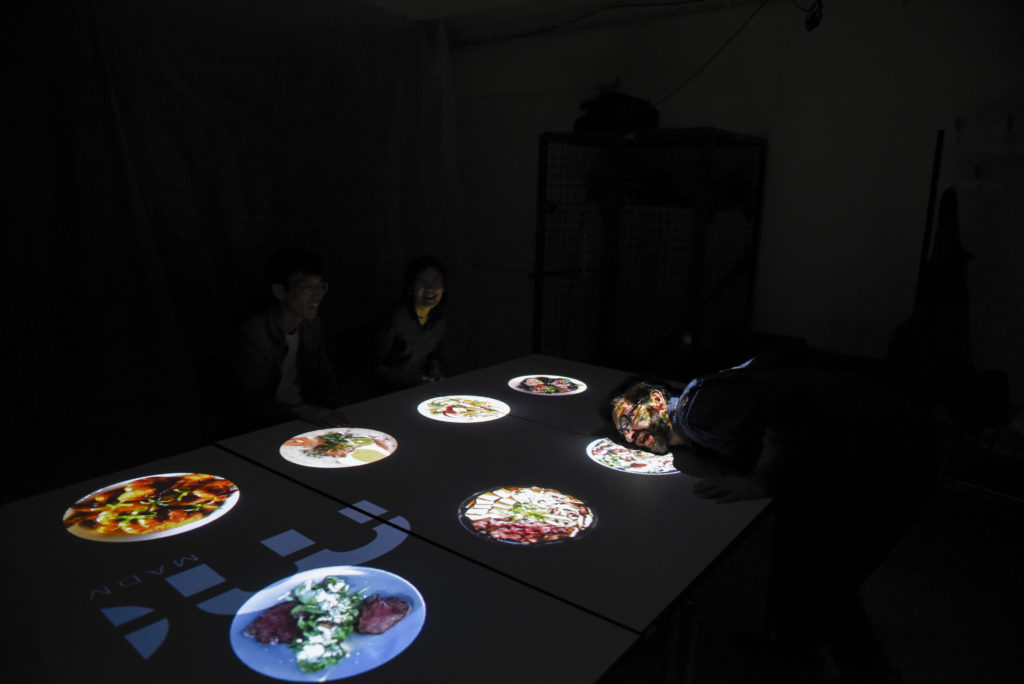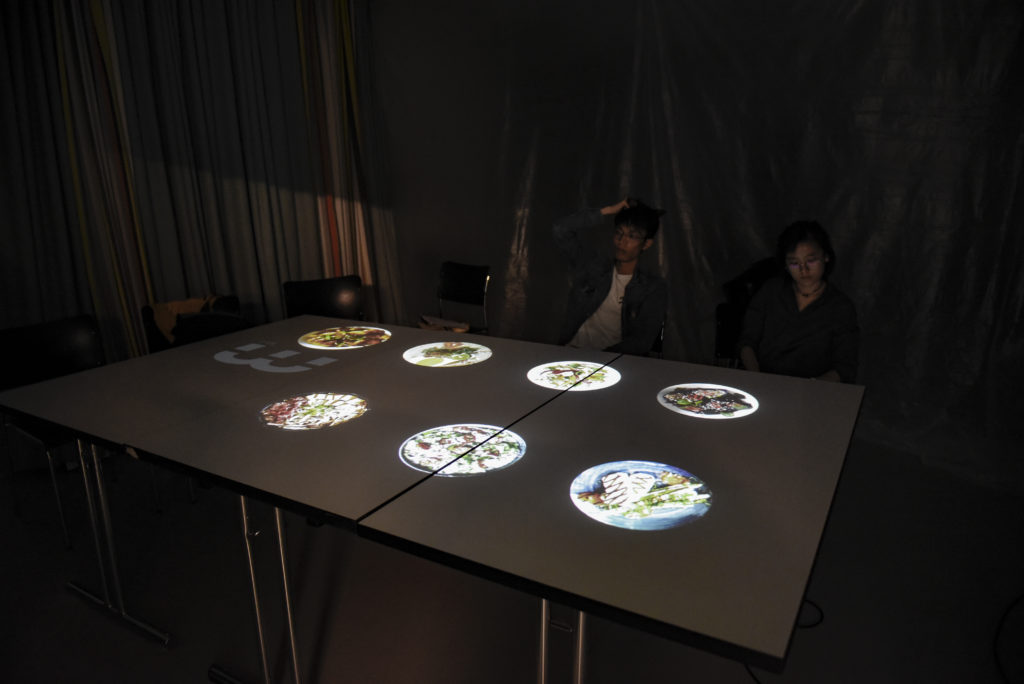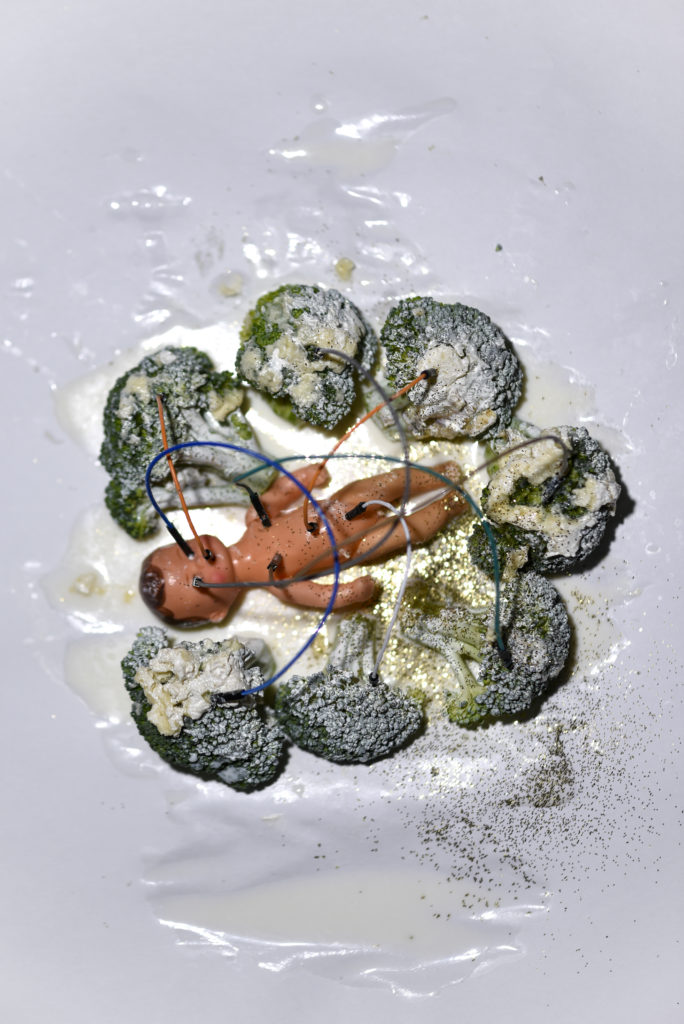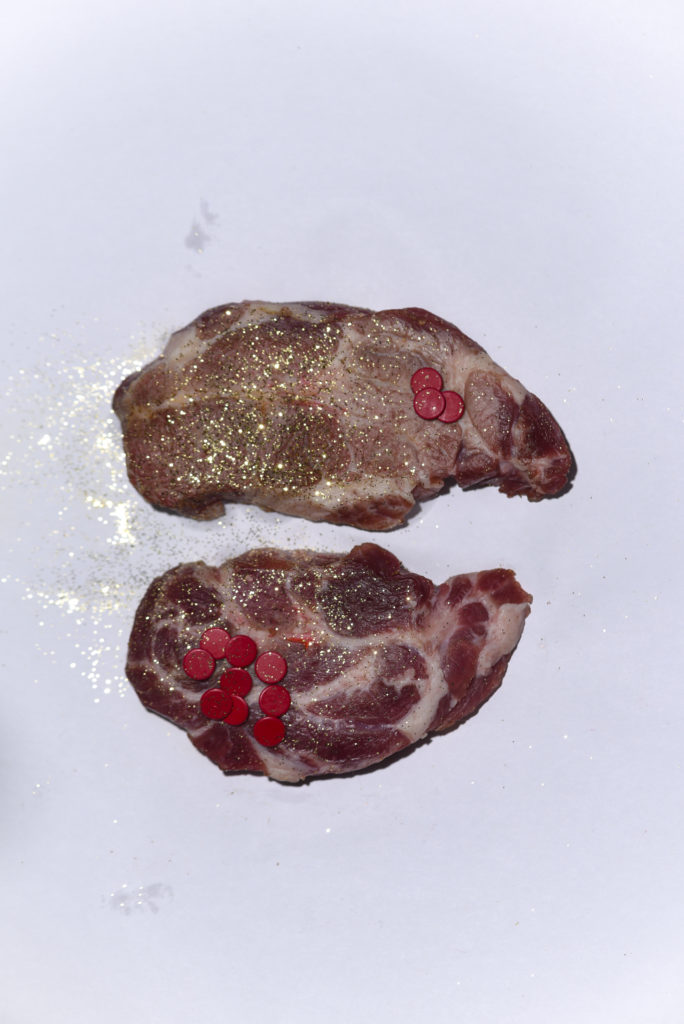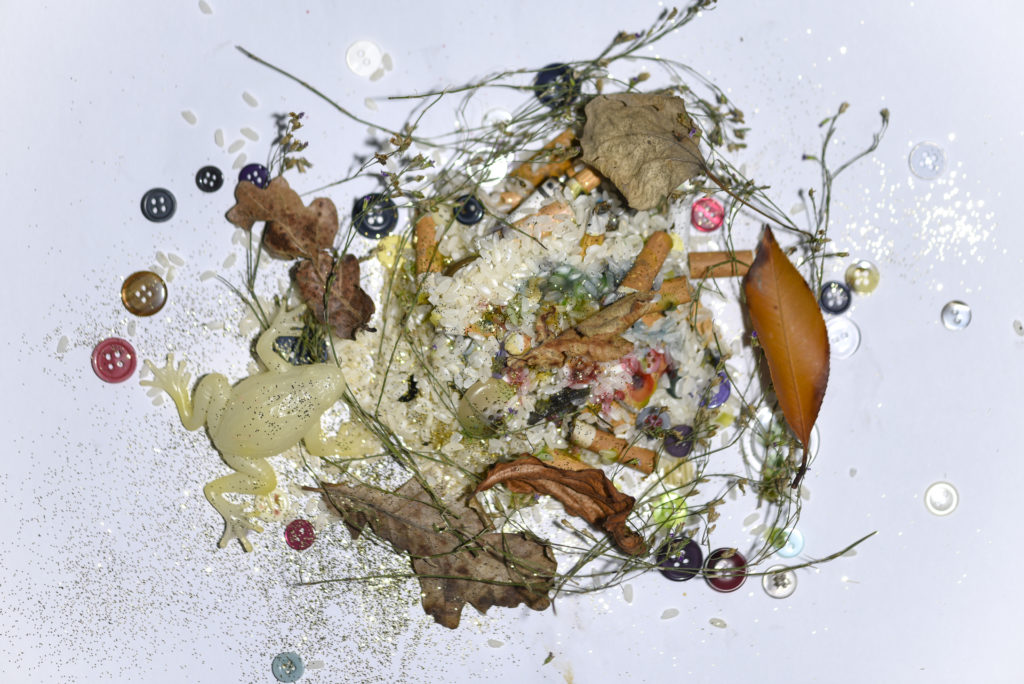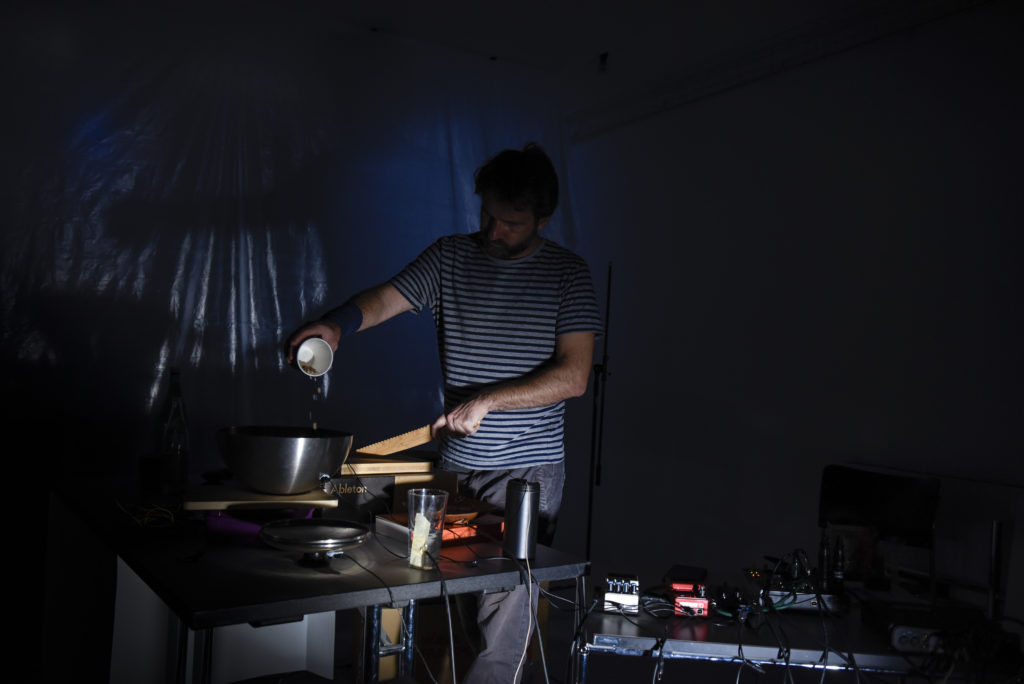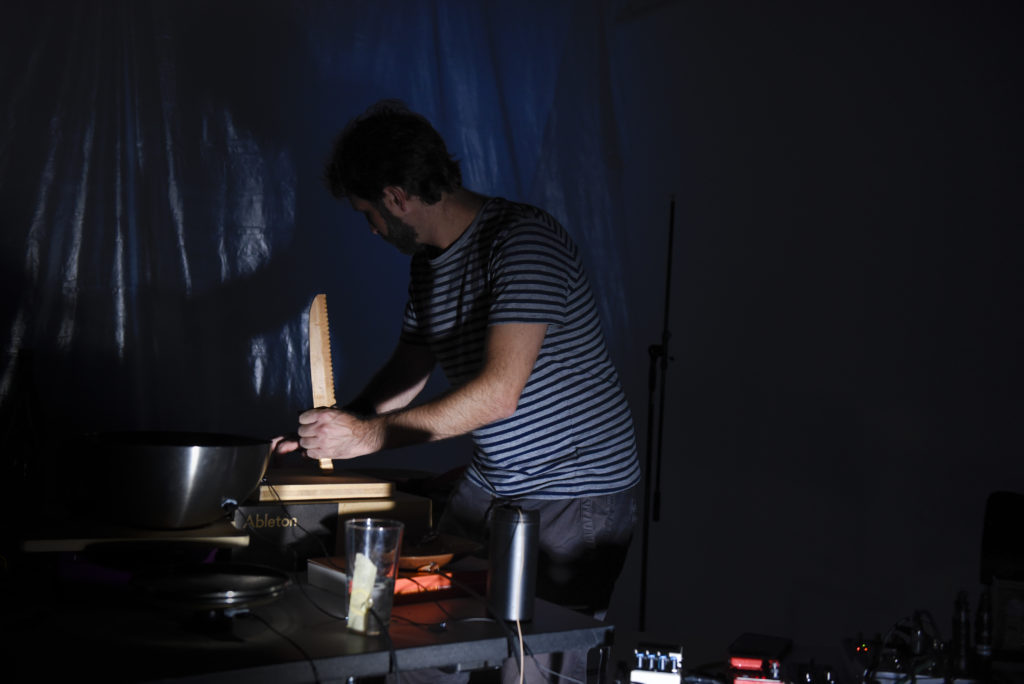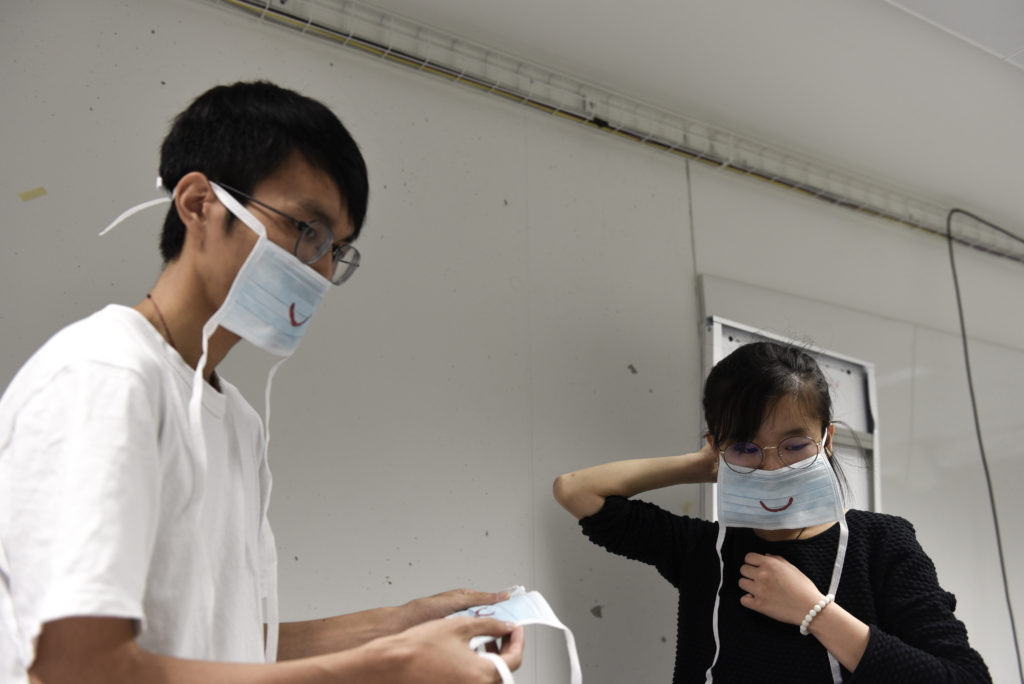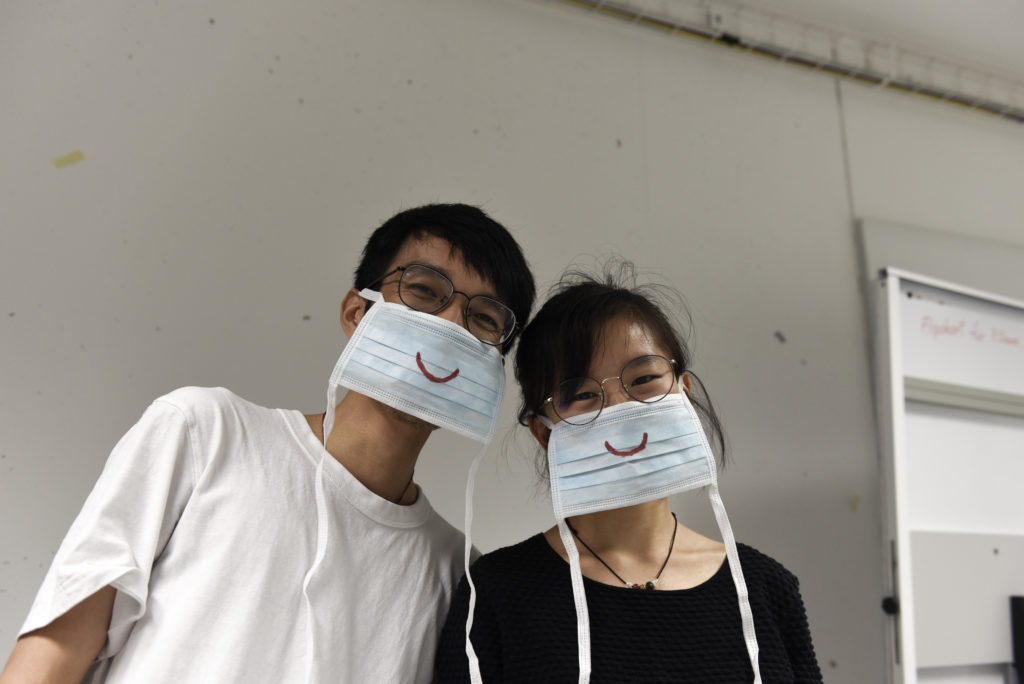By Jiaming August Liao (Creative Media, City University of Hong Kong), Mei Ting Spencer Poon (Visual Art, Academy of Visual Arts, Hong Kong Baptist University), Diego Kohn (Music, Zurich University of the Arts), Claudio Rainolter (Design, Zurich University of the Arts), Jingying Zhang (New Media Art, Taipei National University of the Arts)
Intro
The action of eating and drinking involves people from different cultures into the same ritual. With this ritual one finds the dimensions of spoken and unspoken parts. On the one hand the food is what we eat, taste, look at, touch, smell; on the other hand it is a process until the food is served onto our plates.
Concept
The goal of our work was to let the audience think about what is behind the consumerism and production of industrialised food. To communicate this and our critique we decided to build an accessible interactive space and make a performance in which the audience was not only a passive observer but also an active ingredient of the play. Furthermore, by creating an illusion of a restaurant or using the metaphor of a restaurant we want to create a feeling of reality in a unreal place. This exhibited environment will consist of two separated spaces in which one is for the guests and one for the production of the (live) play.
Process
We started with different questions and things we are interested in and searched for common topics. After this brainstorming sessions we shared our personal ideas and desires.
One of the first ideas was to create two separated rooms in one room showing different aspects and as well the combination of performance and installation. What could we show in one room, what in the other?
Playing and making sound with different objects including some tools from the kitchen lead us to the topic of cooking.
This starting point led further to the general topic of food, the ritual of eating together and different receipts of different cultures. So we decided to go to the store and buy food that we would later cook and eat together.
Unfortunately our idea was only loosely connected to the topic of “Spoken/Unspoken” so we decided to shift from the original direction of cooking and the ritual of eating together to a more critical field: the production and consumption of industrial food.
Not often do we talk about this topic in public and only a small amount of people really takes it seriously or is properly informed about the effects and the process of the industrialised food market. Particularly in Asia the topic is not discussed often as it does not matter so much.
After the exploration of sounds from different (everyday) kitchen tools and processes we wanted to include different videos for the installation that represent different menus in an abstract way. The videos would be projected and mapped on plates on a dining table in the centre of the “restaurant” or the part of the room that the audience has access to.
To make it more realistic the audience was involved in the performance and had the feeling of being in an abstract restaurant with certain real elements like for example a menu card that they could choose from and according to their choices a menu would be projected on their plate. As soon as the basics were working we focused on the details like the costumes of the waiters/waitress, the background music, ambient light or introduction in front of the restaurant. After having all the props that we needed we trained the different roles and situations for the performance and finalised some more details.
Result/State of play
As an end result we produced an performative play in restaurant-like environment. The guest were able to take action and were involved in the scenery. The audience also had different experience depending on where on the table they were sitting, which time they arrived and who they were with. As we only had 30 minutes in total to present our work and limited space for the guests we decided to do a 10-minute performance for a group of 10 peoples three times in a row. The people waiting for their turn outside of the restaurant were handed out cards with the time they could come inside to be served and see our product.
Showing different industrial processes in a rather cold and emotionless environment of an abstract restaurant and the ritual of collective consuming should hint to the industrial world and background of food that we consume.
The sound part was focusing more on the process of producing food and showing an entertaining side, the accessible restaurant room more on the ritual of consuming and showing the critique.
The title of our project and restaurant is an exaggeration of the romanticised image which companies producing and selling industrial-produced food communicate to the public and their consumers.

